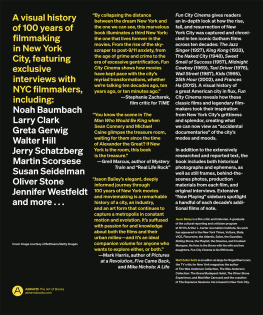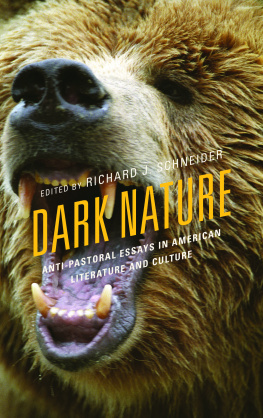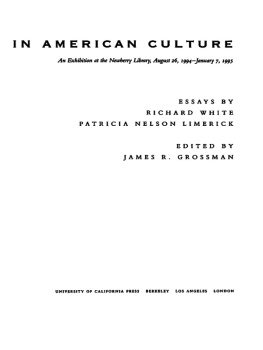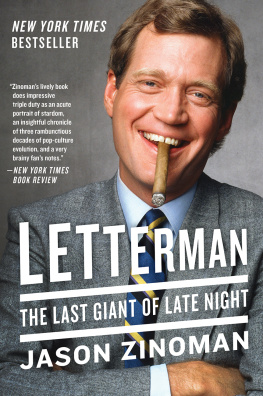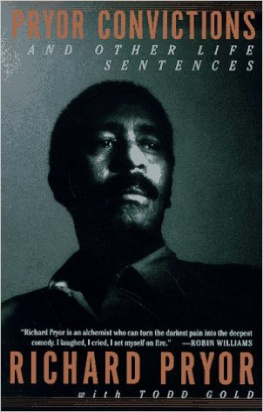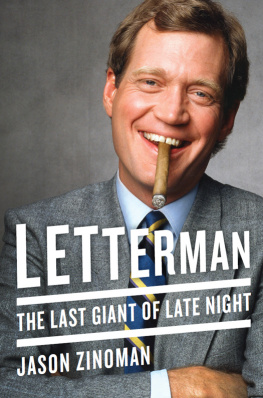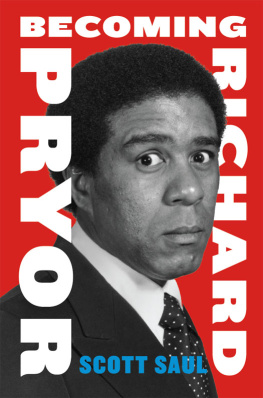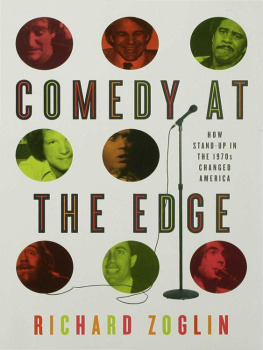Jason Bailey - Richard Pryor: American Id
Here you can read online Jason Bailey - Richard Pryor: American Id full text of the book (entire story) in english for free. Download pdf and epub, get meaning, cover and reviews about this ebook. year: 2015, publisher: The Critical Press, genre: Detective and thriller. Description of the work, (preface) as well as reviews are available. Best literature library LitArk.com created for fans of good reading and offers a wide selection of genres:
Romance novel
Science fiction
Adventure
Detective
Science
History
Home and family
Prose
Art
Politics
Computer
Non-fiction
Religion
Business
Children
Humor
Choose a favorite category and find really read worthwhile books. Enjoy immersion in the world of imagination, feel the emotions of the characters or learn something new for yourself, make an fascinating discovery.
- Book:Richard Pryor: American Id
- Author:
- Publisher:The Critical Press
- Genre:
- Year:2015
- Rating:4 / 5
- Favourites:Add to favourites
- Your mark:
- 80
- 1
- 2
- 3
- 4
- 5
Richard Pryor: American Id: summary, description and annotation
We offer to read an annotation, description, summary or preface (depends on what the author of the book "Richard Pryor: American Id" wrote himself). If you haven't found the necessary information about the book — write in the comments, we will try to find it.
A fascinating, surprising and terrifically entertaining book that is as eccentric and sharp as its subjectJason Zinoman, New York Times comedy critic
This series of essays examines Richard Pryors workfrom albums to concert films to moviesas one of the most powerful yet idiosyncratic voices of American culture.
Richard Pryor: American Id — read online for free the complete book (whole text) full work
Below is the text of the book, divided by pages. System saving the place of the last page read, allows you to conveniently read the book "Richard Pryor: American Id" online for free, without having to search again every time where you left off. Put a bookmark, and you can go to the page where you finished reading at any time.
Font size:
Interval:
Bookmark:
Jason Baileys Richard Pryor is a sharp-eyed, quick-witted portrait of the comedian. Focused on telling moments when Pryor seemed to rewrite the rulebook of American culture, it refreshes our sense of what made Pryor so hilarious, so spell-binding, and so psychologically complex.
Scott Saul, author of Becoming Richard Pryor
Powerful and compassionate. Jason Bailey understands not just Pryors historical significance, but the evolution of his art.
Matt Zoller Seitz, author of The Wes Anderson Collection
Ingeniously organizing Richard Pryors groundbreaking career and epic life by theme, Jason Bailey gives movies and records equal weight to relative ephemera like interviews and talk show appearances, resulting in a fascinating analysis of the push-pull between an often seemingly reckless persona and the confession and craft behind Pryors art.
Karina Longworth, host of You Must Remember This
Richard Pryor has become so revered that its easy to forget what an unusual and enigmatic man he really was. So we should be grateful to Jason Bailey for this fascinating, surprising and terrifically entertaining book that is as eccentric and sharp as its subject. Blending incisive critical analysis, including illuminating close reads of his legendary stand-up, and a newshounds instinct for the revealing detail, he cuts through the legend to explain his titanic legacy in elegant prose that will make you see Pryor in a new light.
Jason Zinoman, comedy critic for The New York Times
Copyright 2015 by Jason Bailey.
All Rights Reserved.
Printed in the United States of America.
Earlier versions of the essays Preface and Two Television Interviews
appeared at Flavorwire (www.flavorwire.com). Used by permission.
Publishers Cataloging-in-Publication Data
Bailey, Jason
Richard Pryor : American id / Jason Bailey.
pages cm
LCCN 2015941790
ISBN 978-1-941629-13-0 (pbk.)
ISBN 978-1-941629-14-7 (electronic bk. text)
1. Humor. 2. Film criticism.
10 9 8 7 6 5 4 3 2 1
To my dad
Who sternly told me not to listen to those albums
But weirdly never bothered to hide them
America is a land of masking jokers. We wear the mask for purposes of aggression as well as for defense, when we are projecting the future and preserving the past. In short, the motives hidden behind the mask are as numerous as the ambiguities the mask conceals.
Ralph Ellison, Change the Joke and Slip the Yoke
I think the American flag would make a great douche- bag cover.
Richard Pryor, Dynamite Chicken
This is not a biography of Richard Pryor. It will not begin with his birth on December 1, 1940, nor end with his death sixty-five years later; it will not survey the entirety of his work (several of his best-known projects are barely mentioned, if at all); it will not spotlight the memories and testimonials of those who knew him well, or claim to. If youre looking for those things, look elsewhere. If you come to this volume with no knowledge of Richards life1 and work, heres the Readers Digest Condensed Books version: Born in Peoria and raised predominately by his grandmother, who owned several brothelsincluding the one where, off and on, both of his parents workedPryor first found success in the mid-1960s as a stand-up comedian with a vanilla act not unlike Bill Cosbys, dropped out of sight at the end of the decade to find himself and find his voice in the counterculture haven of Berkeley, returned to the comedy scene with a boisterous new act rooted in the language and characters of the streets and the sensibility of Black Power, played a variety of tiny- to medium-sized roles in a variety of tiny- to medium-sized movies, finally found film success when paired with Gene Wilder for 1976s Silver Streak, finished out the seventies as a multimedia superstar, nearly killed himself in a drug-fueled frenzy in 1980, came back with a magnificent concert film, and spent the following decade appearing in movies of reliably and increasingly poor quality, hobbled and silenced in the last years of his life by multiple sclerosis.
This is not a biography of Richard Pryor because there is no shortage of Richard Pryor biographiesand as one of the very few good ones, Scott Sauls Becoming Richard Pryor, so eloquently puts it, He wanted to reserve for himself the prerogative to tell his own story on his own terms.2 And he told that story, over and over again, on stage, on the page, on screens big and small. So instead of marching across the familiar map of Pryors life, from Peoria to Greenwich Village to Hollywood to the Sherman Oaks Burn Center, lets throw the map away and look at the story he told us: the themes that reappear in those monologues and performances, the ideas that lurk behind every laugh and inhabit every loaded silence, the life that was lived through his art, the art that became the most insightful (if not always the most accurate) chronicle of that life. And then, beyond all that, lies the question of Richard Pryor in his timehow it defined him, how he defined it, and how, as one of his obituaries contended, in his life and onstage, he performed the great, largely unspoken story of America.3
No tidy, A-to-B-to-C biography can hold Richards sixty-five years; theyre too wild and unruly, too loaded with contradictions and frustrations, too heavy with the baggage of race, sex, protest, representation, and potency that would make him such a vital performer but such a complicated man. So think of this book less as an attempt to encapsulate Richard Pryor than to explore himboth his life and his work, at their divergences and their intersections.
The most riveting footage ever captured of Richard Pryor was shot on the set of Stir Crazy, his biggest box-office hit.1 But it didnt appear in that film, a formulaic buddy comedy, the second of his collaborations with Gene Wilder; its doubtful it was seen anywhere except on the Internet, many years later. It is easy to findnumerous websites have uploaded it, the most popular source accumulating over a million and a half views on YouTube. The video quality is rough, with the look of a VHS copy a couple of generations removed from the original master, and worse for the wear.
The clip runs thirteen minutes and change. As best as we can gather from the conversation, Richard sat down with the cheery television reporter that morning in the spring of 1980 for an on-set interview, but an audio issue required a reshoot later, at the end of the companys lunch break. One does not have to be a police detective or an addiction specialist or a drug-sniffing dog to deduce that, over the course of that lunch break, Richard chose to enjoy some cocaine.2
This was not a rare occurrence on the set of Stir Crazy. He was based out of his fuckin head, recalled his then-companion and future wife, Jennifer.3 Pryor would later admit he was just about gone during the shoot.4 Rather than bunking at the companys luxury hotel, Pryor isolated himself in a ramshackle home in the hills near the films Tucson, Arizona, locations and freebased. He showed up hours late for workwhen he showed up at all. He bought his coke from a motorcycle gang; unbeknownst to me, he would later write, they were being monitored by state police and federal agents, including their visits to and from my trailer and my hillside house.5 He snuck drugs into the Arizona State Penitentiary, where they were filming, and passed them to the prisoners inside whom hed befriended.
Font size:
Interval:
Bookmark:
Similar books «Richard Pryor: American Id»
Look at similar books to Richard Pryor: American Id. We have selected literature similar in name and meaning in the hope of providing readers with more options to find new, interesting, not yet read works.
Discussion, reviews of the book Richard Pryor: American Id and just readers' own opinions. Leave your comments, write what you think about the work, its meaning or the main characters. Specify what exactly you liked and what you didn't like, and why you think so.


